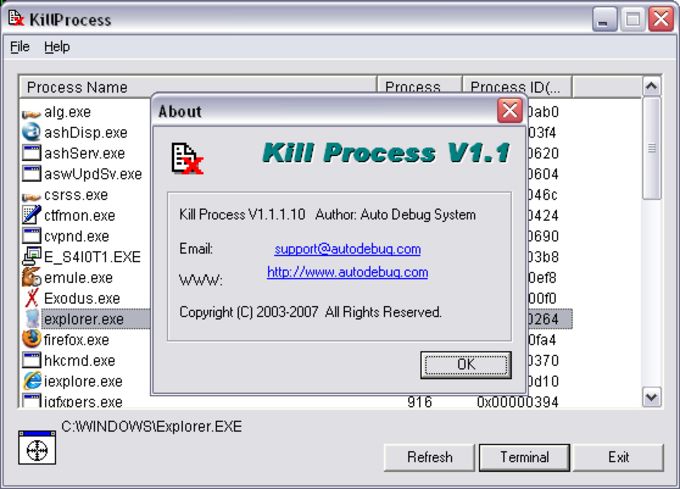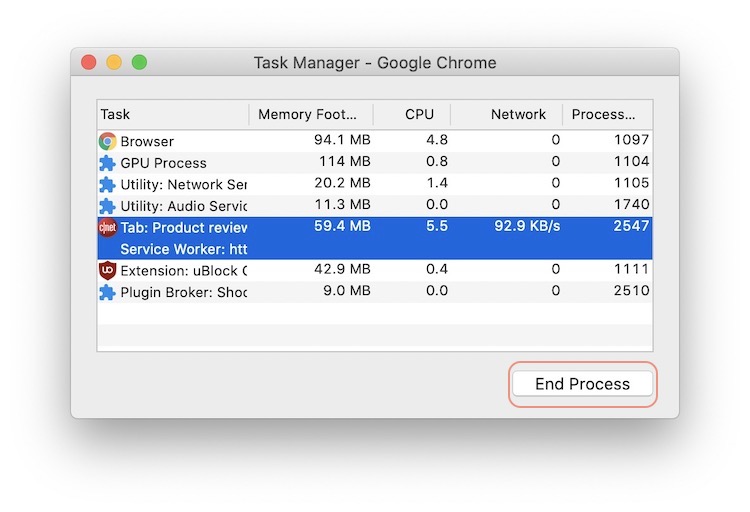
- MAC TASK MANAGER KILL PROCESS HOW TO
- MAC TASK MANAGER KILL PROCESS WINDOWS 10
- MAC TASK MANAGER KILL PROCESS CODE
- MAC TASK MANAGER KILL PROCESS MAC
- MAC TASK MANAGER KILL PROCESS WINDOWS
There are a number of reasons that you might want to kill a process, and different methods that you can use to terminate it.
MAC TASK MANAGER KILL PROCESS WINDOWS
Windows assigns a special number that is known as Process Identifier (PID) which is actually unique for every process.
MAC TASK MANAGER KILL PROCESS CODE
It consists of the program code and its current activity as well. When you start an app, then the operating system creates a process for an executable file of the app. This tutorial will show you 2 ways on how you can kill a process in Windows 10.
MAC TASK MANAGER KILL PROCESS WINDOWS 10
Rather, follow these methods on how you can kill all the processes in Windows 10 properly: Forget about doing it because forceful restarting could lead to computer and also your system file damage. In order to terminate all running processes, the first thing that you are considering is forceful restarting. Multiple open and running apps or processes on your desktop or laptop can lead the system to become slow and even face many errors. If you notice a running process is decreasing your computer’s performance because it’s hung, not responding, or using a high percentage of CPU and/or memory resources, then you can also kill the process to end it. Whenever you start an app, then the operating system creates a process for an executable file of the app.
MAC TASK MANAGER KILL PROCESS HOW TO
In this tutorial, we are going to talk about How to Kill Process in Windows – Tutorial.

Each process running in Windows is assigned a unique number that is called the process ID, or PID.
MAC TASK MANAGER KILL PROCESS MAC
However, if none of these work or you’re unable to perform any of these operations, you can force a shutdown by pressing and holding the power button the Mac shuts down.A process is actually an instance of a program that is being executed. In most cases, you can force quit unresponsive apps on your Mac with any of the methods above and restore its functionality to resume working.
Select the frozen app in the Force Quit Applications window and click the Force Quit button.įorce Quit an Unresponsive App to Resume Mac Operations. Press the Command+Option+Esc key combination. Here are the steps to force quit a frozen app using the keyboard shortcut: It’s the same functionality that we used in the second method, except that, this time, we’ll trigger it with a keyboard shortcut. To this end, Apple’s got you covered with its predefined keyboard shortcut for the Force Quit Applications functionality. But, if your misbehaving app has completely frozen your Mac-to the point where you can’t move the pointer-your only resort to close it is to use your keyboard. While the methods listed so far help you force quit unresponsive or frozen apps on your Mac, they all involve using the mouse/trackpad. Force Quit Mac Apps With Keyboard Shortcut The Terminal is a powerful Mac application that allows you to access and control various macOS components and services using commands. If you prefer working with a CLI over GUI, you can use the Terminal app to force quit apps on Mac. 
Force Quit Mac Application Using Terminal
When prompted for confirmation, click on Force Quit.Ĥ. Locate the frozen app on this application list and click on the ( x) button. Click on the Process Name heading to view active processes alphabetically. Use the steps below to force quit a Mac app using Activity Monitor: If for some reason, the above two methods fail, you can use Activity Monitor to force quit the unresponsive app. Force Quit Mac Apps With Activity Monitor If you bring up the Force Quit Applications menu while you’re on the frozen program, it’ll already have the app preselected, and you can simply click the Force Quit button to close it. Select the unresponsive app in the Force Quit Applications menu and click the Force Quit button. Click the Apple icon () in the menu bar on the upper-left corner of the screen. It might not be apparent to many users, but Apple includes a Force Quit option in its menu, which lets you quickly force quit the app without having to move your mouse much.įollow the steps below to force quit on Mac from the Apple Menu: Choose Force Quit from the available options.  Hold the Option key and right-click on this app’s icon.
Hold the Option key and right-click on this app’s icon. 
Locate the frozen app that you want to force quit in the Dock. The following steps demonstrate how to do this: One of the easiest ways to force quit Mac apps is to use the Dock. Is it bad to force quit on Mac? Or are there any drawbacks to force quit on Mac? How do you unfreeze a Mac? Or How do I fix an unresponsive Mac? Force Quit an Unresponsive App to Resume Mac Operations.








 0 kommentar(er)
0 kommentar(er)
